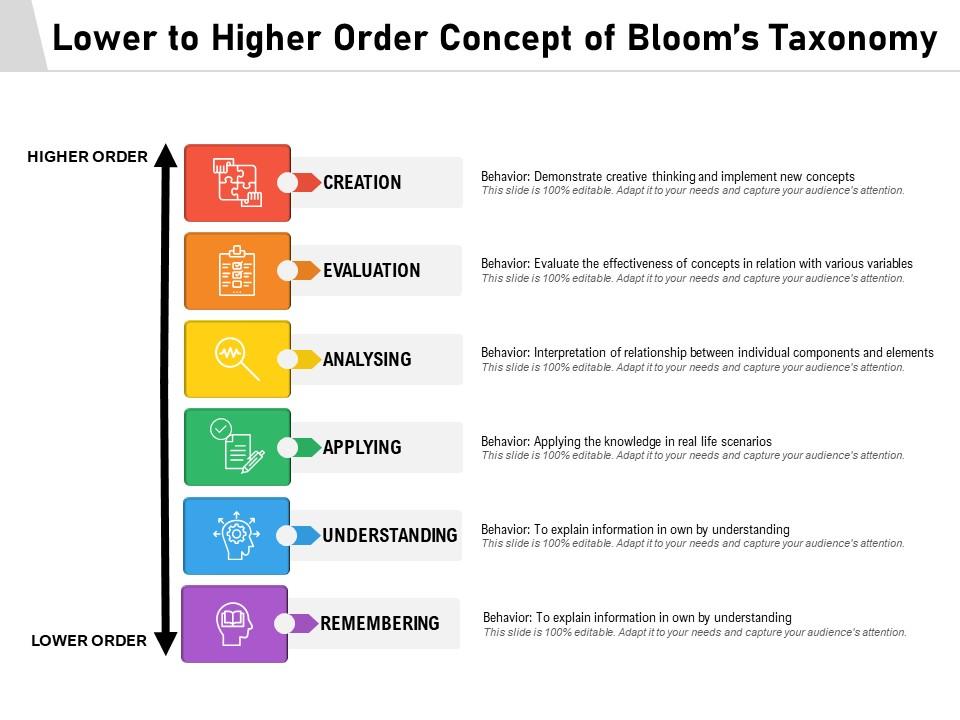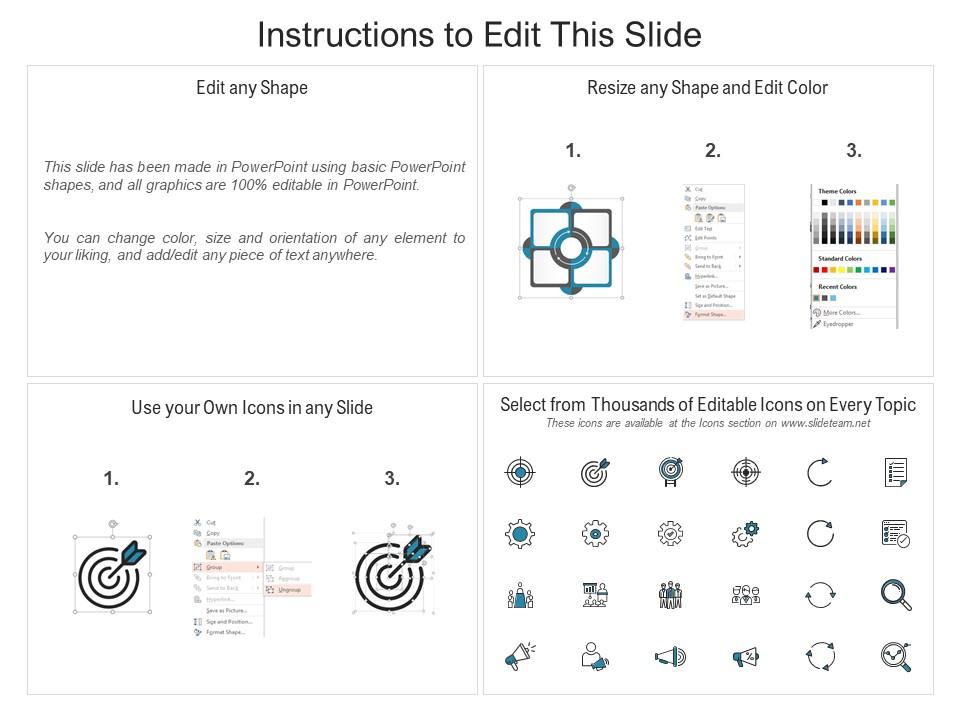Lower to higher order concept of blooms taxonomy
Forestall disappointment with our Lower To Higher Order Concept Of Blooms Taxonomy. They help you overcome difficulties.
Forestall disappointment with our Lower To Higher Order Concept Of Blooms Taxonomy. They help you overcome difficulties.
- Google Slides is a new FREE Presentation software from Google.
- All our content is 100% compatible with Google Slides.
- Just download our designs, and upload them to Google Slides and they will work automatically.
- Amaze your audience with SlideTeam and Google Slides.
-
Want Changes to This PPT Slide? Check out our Presentation Design Services
- WideScreen Aspect ratio is becoming a very popular format. When you download this product, the downloaded ZIP will contain this product in both standard and widescreen format.
-

- Some older products that we have may only be in standard format, but they can easily be converted to widescreen.
- To do this, please open the SlideTeam product in Powerpoint, and go to
- Design ( On the top bar) -> Page Setup -> and select "On-screen Show (16:9)” in the drop down for "Slides Sized for".
- The slide or theme will change to widescreen, and all graphics will adjust automatically. You can similarly convert our content to any other desired screen aspect ratio.
Compatible With Google Slides

Get This In WideScreen
You must be logged in to download this presentation.
PowerPoint presentation slides
Presenting this set of slides with name Lower To Higher Order Concept Of Blooms Taxonomy. This is a six stage process. The stages in this process are Creating, Evaluating, Analyzing, Applying, Understanding, Remembering. This is a completely editable PowerPoint presentation and is available for immediate download. Download now and impress your audience.
People who downloaded this PowerPoint presentation also viewed the following :
Content of this Powerpoint Presentation
Description:
The image is a PowerPoint slide presenting the concept of Bloom's Taxonomy, which is a framework for categorizing educational goals by levels of complexity. The visual arranges the six cognitive levels of Bloom's Taxonomy from lower to higher order thinking skills:
1. REMEMBERING (Purple):
Involves recalling or recognizing information.
2. UNDERSTANDING (Blue):
Comprehending the meaning, translation, interpolation, and interpretation of instructions and problems.
3. APPLYING (Green):
Using a concept in a new situation or unprompted use of an abstraction.
4. ANALYSING (Yellow):
Separating material or concepts into parts so that its organizational structure may be understood.
5. EVALUATION (Orange):
Making judgments about the value of ideas or materials.
6. CREATION (Red):
Building a structure or pattern from diverse elements; it also refers to the act of making something new or original.
Each level is associated with a specific behavior and action verb to describe the learning outcome expected at that level. The slide is marked as "100% editable," emphasizing its adaptability to various educational needs.
Use Cases:
Industries and uses for this slide might include:
1. Education:
Use: Structuring curriculum and assessment methods.
Presenter: Educator
Audience: Students, Faculty
2. Corporate Training:
Use: Developing training materials for employees.
Presenter: Training Manager
Audience: Employees, Human Resources
3. E-Learning Platforms:
Use: Crafting online course objectives.
Presenter: Instructional Designer
Audience: Online Learners, Instructors
4. Healthcare:
Use: Training medical staff on procedural knowledge.
Presenter: Medical Educator
Audience: Doctors, Nurses
5. Management Consulting:
Use: Enhancing problem-solving and decision-making skills.
Presenter: Consultant
Audience: Business Managers, Executives
6. Government:
Use: Preparing civil service training programs.
Presenter: Program Director
Audience: Civil Servants, Policy Makers
7. Non-Profit Organizations:
Use: Designing educational programs for community development.
Presenter: Community Educator
Audience: Volunteers, Community Members
Lower to higher order concept of blooms taxonomy with all 2 slides:
Become a front-runner with our Lower To Higher Order Concept Of Blooms Taxonomy. Find yourself ahead in the competition.
No Reviews











